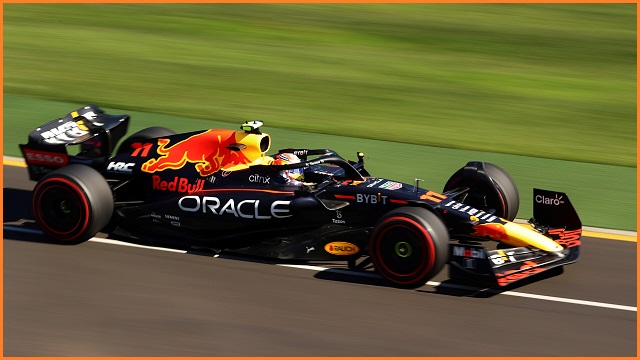You can be forgiven for not thinking much about data analytics and AI when sitting among the Grand Prix punters in the turn 12 grandstand at Melbourne’s Albert Park during a sunny afternoon practice session.
The smell of grass, burnt rubber, and petrol combined with the scream of F1 cars is intoxicating enough as you watch elite drivers make their way around the track testing ways to shave off crucial fractions of a second at qualifying the next day.
“There’s the Oracle car,” points out a journalist as reigning champion Max Verstappen rounds turn 11 and comes into view, the US tech company’s name prominently displayed on his red, yellow, and blue Oracle Red Bull Racing car.
Oracle is forking out US$300 million over five years to be the naming sponsor of Red Bull Racing, according to Reuters sources.
It’s a deal that expands the relationship forged early last year when Oracle was tapped to provide Red Bull with cloud infrastructure for data analytics.
At the time, Red Bull Principal Christian Horner said the relationship was “a major step forward” for the racing team to have “one of the industry’s most recognised and trusted names in database management and cloud computing” on board.
Just under nine months later, a controversial steward decision in the last race of the season helped Verstappen secure his first championship victory and end the four-year winning streak of Englishman Lewis Hamilton.
Oracle’s precise role in that championship would be easy to overstate; no amount of cloud infrastructure and data analytics can account for driver errors, mechanical failures, and luck that combine with a near infinite set of variables to affect any given race.
Regardless of which vendor teams choose, data management is a crucial part of modern racing.
The Red Bull cars have around 150 sensors constantly sending data back to the racing team over a Grand Prix weekend which, combined with video and audio data, can see hundreds of terabytes of data moving back and fourth in just a few short days.
“We are looking for every opportunity to make decisions that will improve our performance on the track,” Red Bull Racing’s Head of Partnerships Zoe Chilton told journalists at the Commons Collective, a venue a short walk from Melbourne’s F1 track.
“Tools like artificial intelligence and machine learning are going to become really important in the sport as we become more and more data driven.
“As the volumes of data become larger, we have to think about how to get actionable insights from those.”
Using every possible data point gathered about the track, the car, historical races, and practice and qualifying sessions, engineers run billions of simulations to help inform the race strategy.
“It’s ultimately what decides when we do our pit stops and how we react to what’s happening around us on the track,” Chilton said.
But despite all the data modelling and Monte Carlo simulations testing probabilities of outcomes, it was a mechanical failure that got in the way of Oracle Red Bull finishing the Melbourne Grand Prix with two podium place, as a frustrated Verstappen abruptly pulled over and shut off his car in the 39th lap all but handing first place to Ferrari’s Charles Leclerc.
The Frenchman held up the race trophy on Sunday afternoon with a plain white Amazon Web Services (AWS) logo quietly visible on his left shoulder.
Casey Tonkin travelled to Melbourne as a guest of Oracle.










